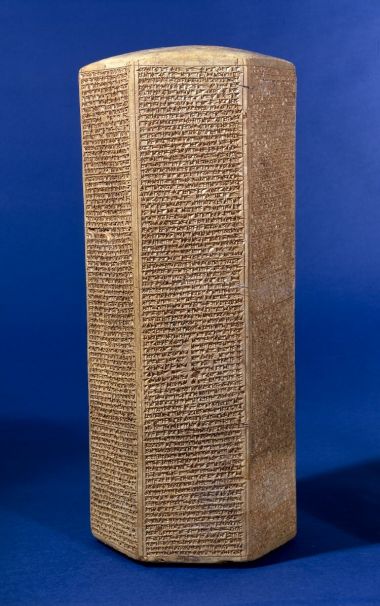Of mice and men: How archaeology confirms a Bible story

Question: What links a great English poet, a small clay cylinder and a plague of mice?
The answer is Sennacherib – and the story is fascinating.
Sennacherib was the king of Assyria from 705-681 BC. His reign was dominated by a long struggle with Babylon, officially part of the Assyrian Empire but continually struggling for independence. But he also fought a campaign against the Kingdom of Judah under King Hezekiah, and thanks to the biblical record and Sennacherib's own archives – found on clay tablets in his city of Nineveh – we know quite a lot about it.
The Bible tells the story in 2 Kings 18-19, 2 Chronicles 32 and Isaiah 36-37. The stories agree in their essentials, and paint a picture of Jerusalem reduced to desperate straits. Sennacherib had overthrown the northern kingdom of Israel and extorted a huge tribute from Hezekiah. By his own account he captured 46 fortified cities and various other small communities. He says he took more than 200,000 people captive – a devastating blow when a country's wealth was measured in the number of bodies it had available to till its fields.
While Sennacherib remained at Lachish, around 25 miles away, Jerusalem was besieged, with the populace on the verge of starvation. In 2 Kings 18 the Assyrian field commander calls contemptuously on Hezekiah to surrender. Morale in the city is so low that Hezekiah's officers ask him to speak in Aramaic rather than Hebrew, so that the people won't understand his threats (he refuses).
But rather than surrendering, Hezekiah prays. Isaiah, the court prophet, stiffens his spine with a promise that God will intervene. Sennacherib hears news that he is under attack from Egypt and makes plans to withdraw. Before he can do so, however, we're told: "That night the angel of the Lord went out and put to death a hundred and eighty-five thousand in the Assyrian camp. When the people got up the next morning – there were all the dead bodies! So Sennacherib king of Assyria broke camp and withdrew. He returned to Nineveh and stayed there (2 Kings 19: 35-36). In 2 Chronicles 32:21 it says that God "sent an angel, who annihilated all the fighting men and the leaders and officers in the camp of the Assyrian king". Sennacherib returned home and was assassinated in the temple by one of his own sons – possibly crushed under the statue of a huge winged bull.
So, what about the small clay cylinder? That's the Taylor Prism, now housed in the British Museum. It was discovered, wonderfully preserved, among the ruins of ancient Nineveh by Colonel Taylor in 1830. Only 38 cm high and 14 cm wide, it describes Sennacherib's campaigns against Judah, recording that he "shut him up like caged bird" in Jerusalem.
The English poet is George Gordon, better known as Lord Byron. He wrote a remarkably vivid and stirring poem called The Destruction of Sennacherib based on this story. It begins:
"The Assyrian came down like the wolf on the fold,
And his cohorts were gleaming in purple and gold;
And the sheen of their spears was like stars on the sea,
When the blue wave rolls nightly on deep Galilee."
The deaths of the Assyrian host are described like this:
"For the Angel of Death spread his wings on the blast,
And breathed in the face of the foe as he passed;
And the eyes of the sleepers waxed deadly and chill,
And their hearts but once heaved, and for ever grew still!"
Byron's poem concludes:
"And the widows of Ashur are loud in their wail,
And the idols are broke in the temple of Baal;
And the might of the Gentile, unsmote by the sword,
Hath melted like snow in the glance of the Lord!"
Lastly, what about the plague of mice? This part of the story isn't found either in the Bible or in Sennacherib's records. But the Greek historian Herodotus records that he attempted to invade Egypt (and he would have gone by way of Judah) but was frustrated "at the gates of Egypt" by a plague of mice, who ate the bowstrings and quivers of his army. Scholars think that this may be a garbled memory of what happened outside Jerusalem and that the "angel of death" may have been a plague carried by rodents that wiped out his forces.
The Bible isn't just poetry and wise teaching. It's history too, and sometimes this history is confirmed from outside its pages. Through it all, we learn of God's eternal care for his people.
Follow Mark Woods on Twitter: @RevMarkWoods











